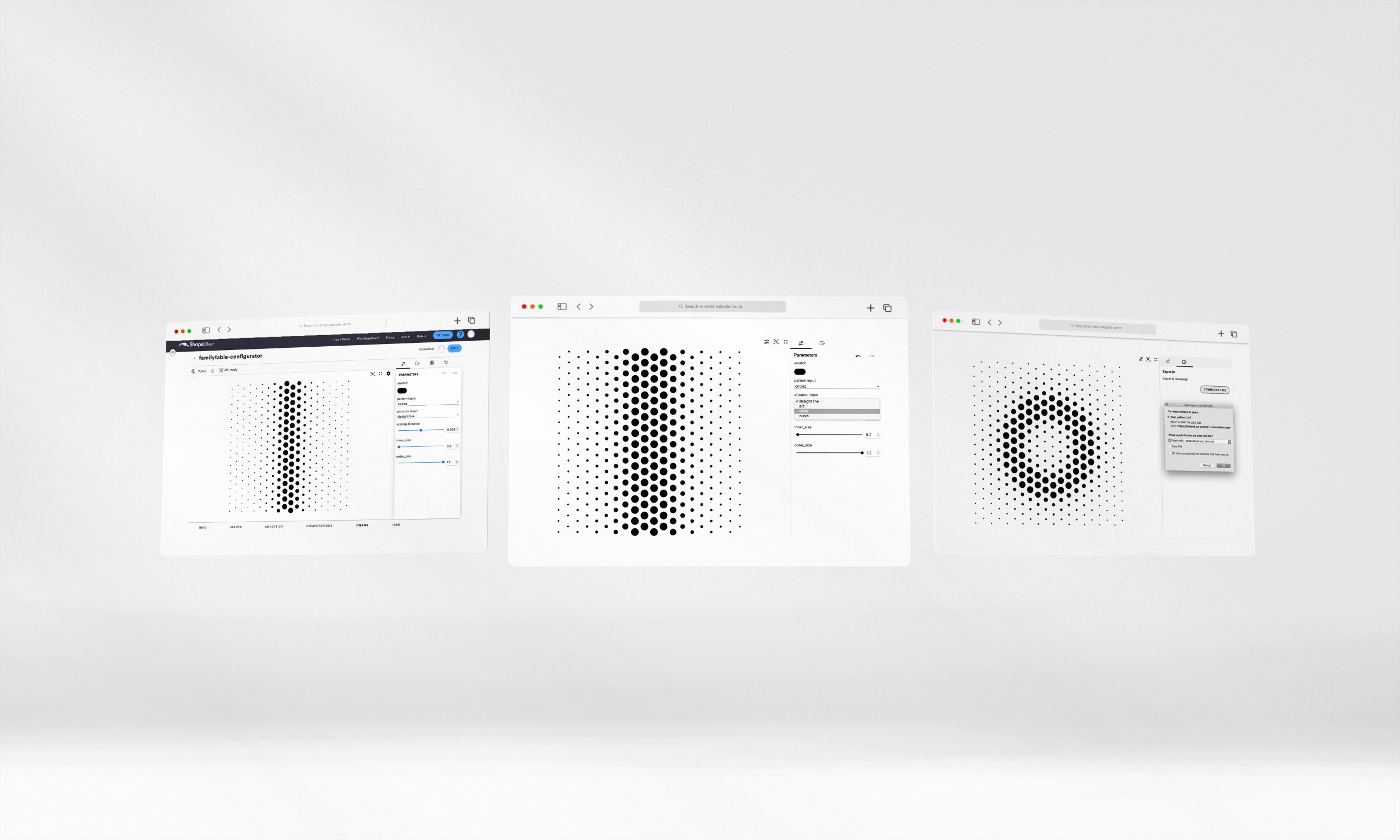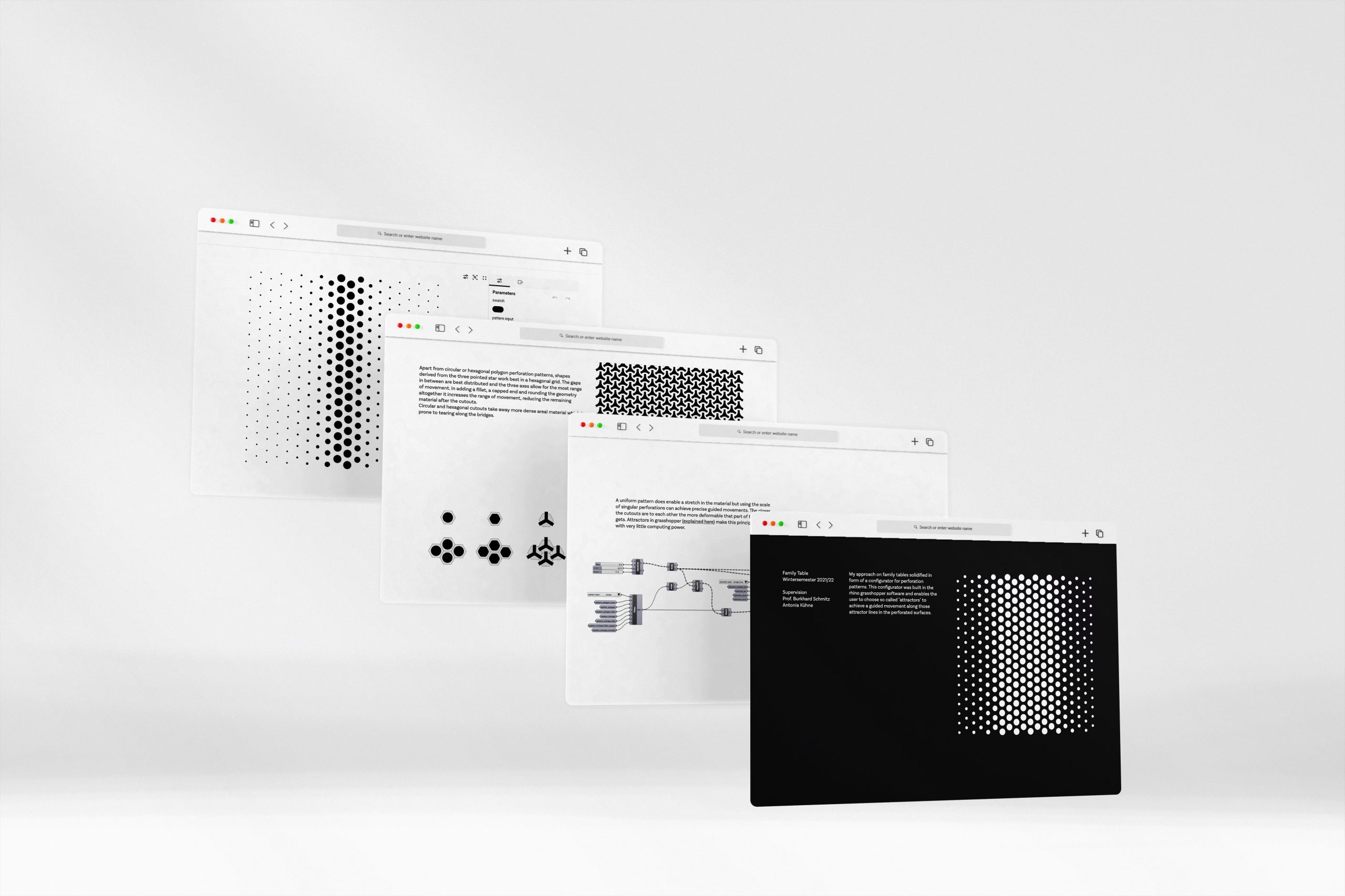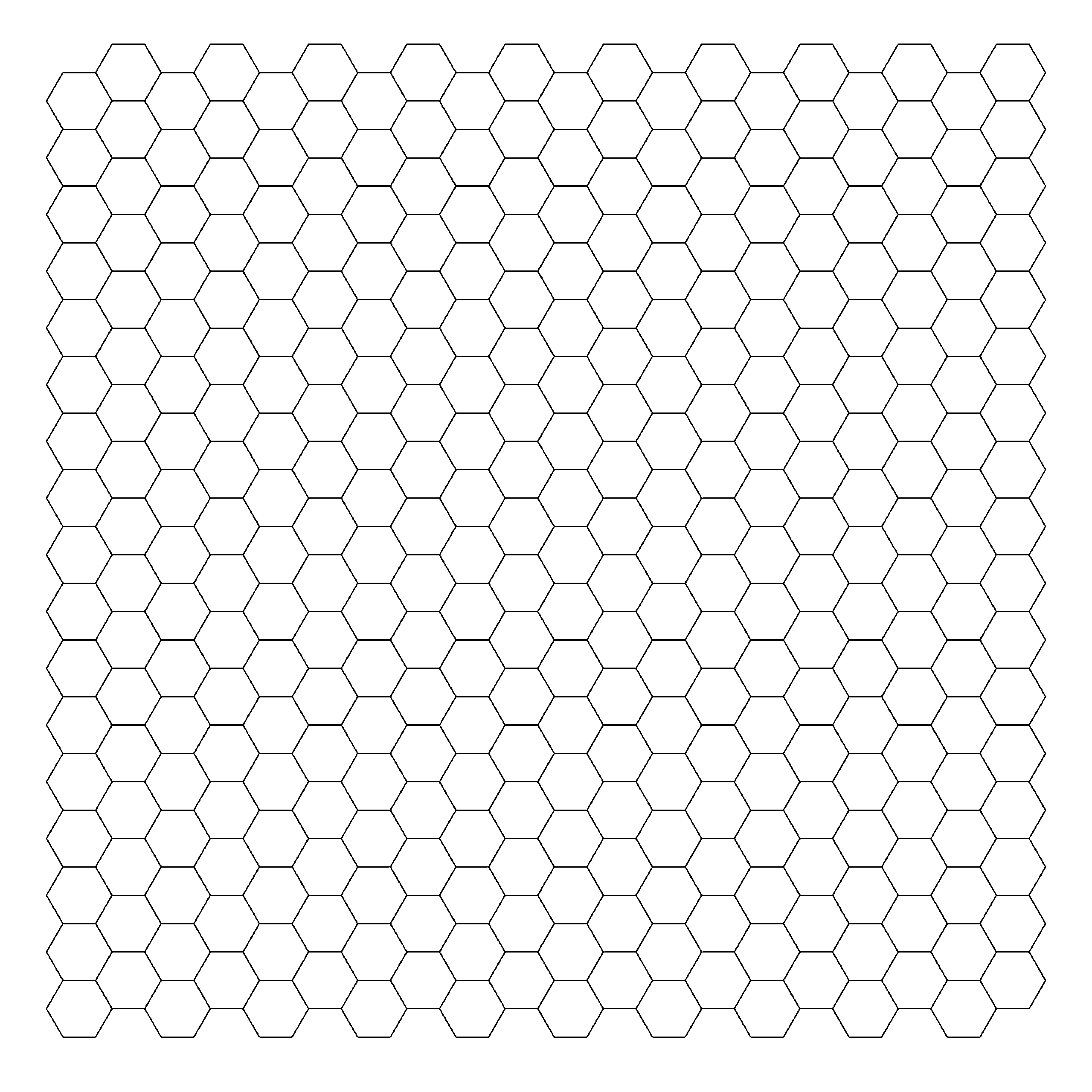PERFORATION PATTERN
Eine Perforation ist ein kleiner Ausschnitt in einem Material. In der Regel gibt es mehr als eine Perforation in organisierter Form, wobei alle Ausschnitte zusammen ein Perforationsmuster bilden. Perforationen können als Leitlinien für das Reißen von dünnem Material entlang einer perforierten Linie oder als Designelement für funktionale oder ästhetische Zwecke verwendet werden.
Ein einheitlich gerastertes Muster ermöglicht zwar eine Dehnung des Materials, durch die Skalierung einzelner Perforationen können jedoch präzise gerichtete Bewegungen erreicht werden. Je näher die Ausschnitte beieinander liegen und je größer der Ausschnitt, desto verformbarer wird der betroffene Teil des Materials. Attractors in Grasshopper machen dieses Prinzip mit sehr wenig Rechenleistung möglich.
Es wird ein Hex-Gitter mit einer vorgegebenen Anzahl von Zellen erstellt. Die Mittelpunkte jeder Zelle dienen als Zentrum für das jeweils gewählte Perforationsmuster. Der Attractor (beliebige Geometrie) bestimmt die Skalierung des Musters innerhalb der Hex-Gitterzelle. Je näher sich eine Zelle an der Attractor Geometrie befindet, desto größer wird das Perforationsmuster skaliert.
Das Ergebnis ist ein flexibler Teil entlang der Attractor Geometrie. Durch das Erstellen eigener Attractor Geometrien werden gerichtete Bewegungen und Verformungen ermöglicht. Ein einfaches Ergebnis ist eine gerade Linie, die eine lineare Biegung verursacht, es sind jedoch komplexere Verformungen möglich.
Die vom dreizackigen Stern abgeleiteten Formen funktionieren am besten in einem sechseckigen Gitter. Die Zwischenräume sind bestmöglich verteilt und die drei Achsen ermöglichen den größten Bewegungsspielraum. Durch das Hinzufügen von Abrundungen (fillet), Kappen und das Abrunden der Geometrie insgesamt wird der Bewegungsspielraum jeweils vergrößert.
Im Online-Konfigurator ist eine beispielhafte Voreinstellung von vier Attraktorgeometrien vorgeladen. Es kann jedoch jede beliebige .dxf- Datei importiert werden. Nach der Anpassung durch die Schieberegler oder manueller Eingabe von Werten und der Fertigstellung des Musters wird die Datei über eine Download- und Exportfunktion gespeichert. Das Format .dxf kann in jedem CAD-Programm geöffnet und für Fertigungsverfahren wie Laser cutten oder 3D-Druck verwendet werden.
PERFORATION PATTERN
A perforation is a small cutout in a material. There is usually more than one perforation in an organised fashion, where all of the cutouts collectively form a perforation pattern. Perforations can be used as guidelines for ripping thin material along a perforated line or used as a design element for functional or aesthetic purposes.
A uniform pattern enables a stretch in the material but using the scale of singular perforations can achieve precise guided movements. The closer the cutouts are to each other the more deformable that part of the material gets. Attractors in grasshopper make this principle possible with very little computing power.
A hex grid with a predetermined number of cells is created. The middle points of each cell act as the center point for whichever perforation pattern is selected. The attractor (any geometry) determines the scaling of the pattern within the hex grid cell.The closer to the attractor geometry, the bigger the scaling. The result is a flexible part right along the attractor geometry. Directed movements can be made possible by choosing and drawing attractor geometries. A simple result is a straight line causing a linear bend, however much more complex deformations are possible.
Shapes derived from the three pointed star work best in a hexagonal grid. The gaps in between are best distributed and the three axes allow for the most range of movement. In adding a fillet, a capped end and rounding the geometry altogether it increases the range of movement. Circular and hexagonal cutouts take away more dense areal material which is prone to tearing along the bridges.
In the online configurator an exemplary preset of four attractor geometries is preloaded. Any .dxf file can be imported though. After adjusting the sliders accordingly and finalising the pattern, a download and export feature enables the user to save their pattern. The format .dxf can be opened in any CAD program and used for manufacturing such as laser cutting or 3d printing.








